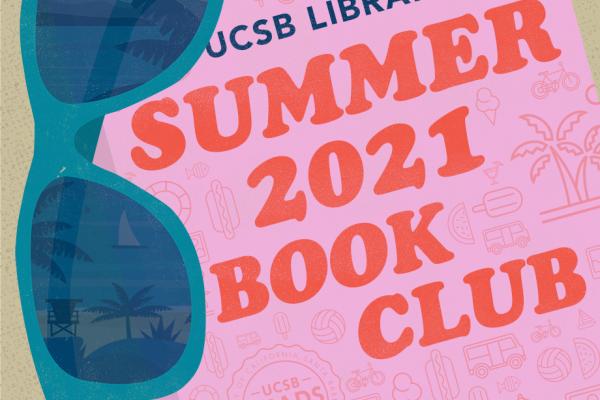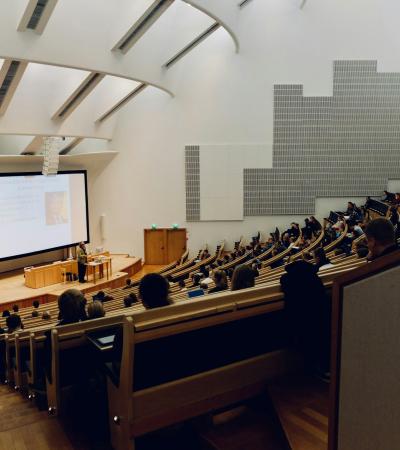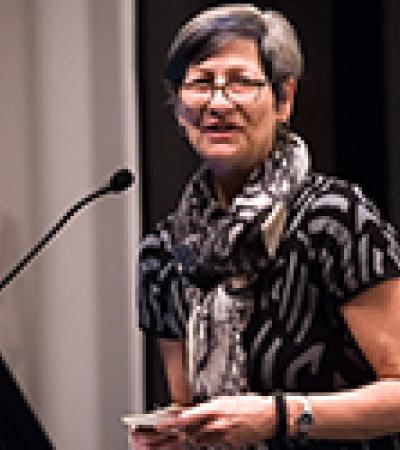Students at beachside University of California, Santa Barbara have a reputation for working hard and playing hard. But parties and surfing aren’t all they want to do in their free time.

Pre-pandemic, I occasionally talked to students who told me that even in literature classes, the fast pace of the quarter system didn’t allow for the types of book-centered discussions they hungered for. These comments stayed with me. How could a librarian not love hearing that students wanted more occasions to talk about books? But in my role leading public programming for UCSB Library, I had my hands full organizing events designed for multiple audiences across campus and the wider Santa Barbara community. Student-only book clubs didn’t seem like something I could or should take on.
Zoom book clubs: A pilot program
Then the COVID-19 pandemic struck, and as campus abruptly closed and classes moved onto Zoom, it became clear to many of us on campus that helping students stay connected to their peers and the larger UCSB community was essential to student success. It seemed like the right time for the Library to pilot peer-led student book groups. This article was useful in helping to plan virtual programs for students.
Building on an existing common book program
Our small public programming team saw the potential for these book clubs to foster a sense of community among students learning remotely and at the same time raise awareness of UCSB Reads, the library-directed common book program that runs from January to June every year.
Since UCSB Reads would be over for the year by the time we got the groups running, we decided to present the “short list” of five books and one podcast under consideration for next year. Each group would decide which one (or more) of these five titles they wanted to read, and we would mail paperback copies to each student. As with the UCSB Reads program, we believed these groups could bring the campus together to discuss important issues raised by a book — but for these groups, we were defining “campus” as students from disciplines as diverse as physics and political science together in a Zoom room.
Planning and goal setting
Knowing that perfect can be the enemy of the good, and wanting to launch the groups quickly, we decided not to worry about getting everything right the first time. We would use these groups to gauge student interest and gather feedback to inform a second round of book clubs.
We started planning right away, reaching out to supportive faculty from the Writing and English Departments for a brainstorming session and to get suggestions to share with students on leading and contributing to inclusive, productive book discussions.
Based on these conversations, we created a section on the UCSB Reads libguide with ground rules and tips for leading discussions, especially ones addressing difficult issues such as racial injustice.
We wrote a job description for group leaders that outlined responsibilities, the estimated time commitment, and compensation of $50 to each leader. By paying a stipend, we acknowledged that many students need paid work to support themselves, and also that there was responsibility and a time commitment involved. We specified that the groups would meet a minimum of two times over the summer, but they could choose the days and times that worked best for them. The first meeting would be for choosing the book or book they wanted to read as a group and to go over ground rules.
Lastly, we devised four goals for the book groups. By creating fun yet structured extracurricular book clubs that we would promote to all majors and classes, we hoped to:
- Create community among students during remote learning period
- Foster interdisciplinary discussions with students from diverse majors and class years
- Raise awareness of the UCSB Reads program among students
- Build momentum for the launch of UCSB Reads 2021
Recruitment for group leaders and participants
We asked faculty for names of students potentially interested in leading discussions, and we asked the UCSB MultiCultural Center to share our description with their large group of student affiliates. We also decided to include recent alumni in our outreach. Students graduating during the pandemic faced an uncertain job market, faculty told us. These recent graduates, many who hoped to become teachers, could share their knowledge and enthusiasm for books with current students, while building career skills.
Although our faculty partners were available as resources to the group leaders, we decided they would not participate in the book discussions. This allowed students to take the larger role and make it clear that these groups were extracurricular.
We publicized the groups by asking faculty to share with their students, including the UCSB Reads selection committee faculty. We also publicized via social media, specifically via the UCSB Library Instagram and Facebook.
Ultimately, we formed 10 book clubs led by seven students and three recent alumni.
Round 2: Learning from the pilot program

In all cases, the group leaders said they enjoyed the groups and found the discussions rewarding. They emphasized the importance of regular communication with the participating students and suggested assigning two leaders to each group to balance the work involved.
Based on their feedback, we decided to launch another round of the program in summer 2021 using the books on the UCSB Reads 2022 shortlist. We would make the following changes:
- Each book club would be co-led by two students/recent alumni. We would increase the stipend in order to attract a larger and potentially more diverse group of students, and we would expand our outreach to recruit a larger pool of interested students.
- To help defer the cost of the stipends, book purchases and postage, we applied for and were awarded a 2021 UCSB Summer Culture & Community Grant of $3,520. The grant allowed us to double the stipend to $100 and helped defer the cost of mailing books to all participants.
- To reach more students, we asked the Dean of Student Life to share our outreach email with all enrolled students, and this broader reach was exactly what we needed. We recruited 10 students interested in leading groups, and close to 200 who wanted to participate. Knowing there would be dropoff in attendance, we ended up assigning 20 students to a group. Even so, we had to close registration for the groups so that they did not become too large.
Results
Because this time we had surveyed both leaders and participants, we had more data with which to evaluate the program’s success, and they were successful! Here’s what we found:
- Several groups met more than the required two times. One group continues to meet as of late fall 2021.
- Surveyed students overwhelmingly agreed with the comment, “I felt connected to other students by participating in this book club.”
- Student participants and group leaders ranged from first-year to recent graduates. One successful book club was co-led by a graduate student in English and a first-year student
- Students from the humanities (Anthropology and Black Studies), the social sciences (Economics, Political Science), and STEM fields (Math, Computer Science, Biology) participated in the groups
Individual comments provide further evidence of the value of these groups:
“I really appreciate this club and program for giving me the opportunity to explore books that I may not normally pick up or hear about. As well as letting me connect with students in a way I couldn't last year.”
“I love being a part of this program, as do the students I meet with. They are constantly telling me how great it is to be part of a community!”
“I loved how the book club was very clear about the meetings being optional; the leaders wanted these meetings to be fun, interactive learning experiences that came with no stress attached. I loved getting to connect with other students during the pandemic, too. And the free book was an amazing perk! I used to love reading and this book club is what finally pushed me to start reading again.”
“I would have liked the club to last longer than 3 meetings. I wish we could have read a few books and spread it out over the entire summer.”
While we didn’t specifically ask about awareness of the UCSB Reads program, we did know which books from the shortlist students chose to read in their groups, and we got feedback on the books they read. One title stood out as the clear favorite, "Exhalation: Stories by Ted Chiang," and this feedback was important to the selection committee who ultimately selected this book for UCSB Reads 2022.
What’s next?
Although our campus has returned to in-person classes, we believe interest in library-supported, peer-led book discussions will continue. Since several of the leaders expressed interest in leading discussions with a new group of students around the UCSB Reads 2022 book, we plan to work with them to promote these new groups as part of our larger UCSB Reads 2022 programming.



